How to make your own cigar glue
Your cigar is cracked or damaged. You already know how to fix it, and why you might need cigar glue. Why not make you own glue? it’s easy and cheap, and it’s fun too.
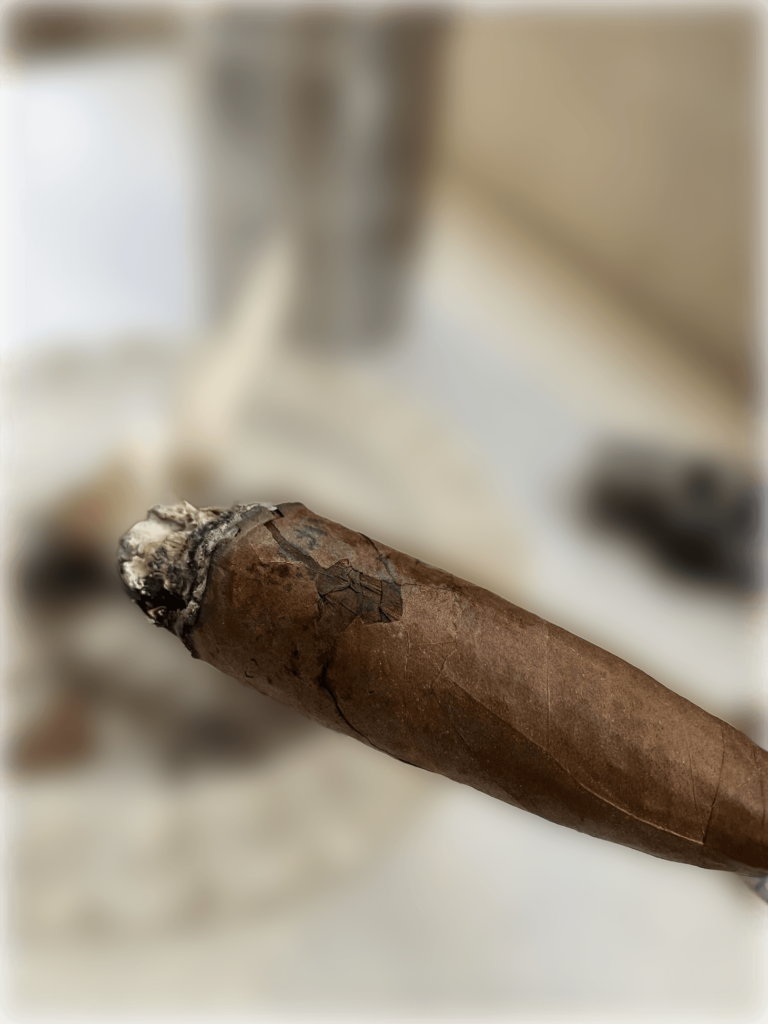
What makes cigar glue different from other glues?
Cigar glue isn’t that much different from many other kinds of glue. But you certainly do not want to apply glue to your cigar that might be harmful for your health.
Many commercial glues might be suitable for paper, wood or plastic, but certainly may contain hazardous ingredients. Even if safe, they might affect the taste or aroma of your cigar.
What you’re looking for is a natural glue, aroma-free, safe and that won’t cause your cigar to burst into flames. You’re also looking for a glue that has the right consistency. Not too thick to make it difficult to apply, and not too thin that it would drip all over your cigar either. Luckily there are lots of ingredients you can find in your grocery store that could do the job, and are very easy to make. Let’s dive in.
Types of natural glues
Cigar glue has been around for centuries. Rollers use it when they roll your cigar. In fact, cigar glue is typically the only ingredient other than tobacco leaves in your cigar.
Fruit Pectin
You can find fruit pectin in most grocery stores, likely in the baking section. Fruit pectin is used for making jams, marmalades and confitures. It acts as a thickener and adds stickiness. Pectin is typically made from citrus, apples or pears, but can be made from other fruits or vegetables. Pectin was designated the European E number E440 (it’s broken down to two sub-types if you want to get geeky on it).
To make cigar glue from pectin, simply add a small amount of distilled or filtered water, and mix well. Be careful to add water gradually and mix thoroughly until you get the right consistency. Pectin tends to clump easily.
There are three disadvantages to Pectin compared to other options we’ll explore below: it tends to clump easily as we mentioned, it also spoils easily, so might not last a very long time, and lastly it might impart a slightly tangy, sour taste to your cigar.
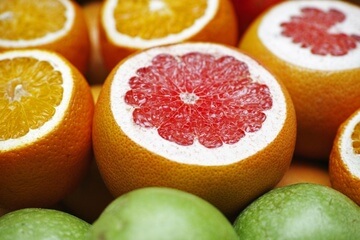
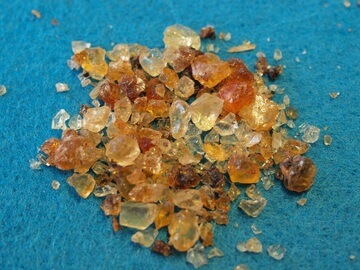
Gum Arabic (Gomma Arabica , Acacia Gum)
This is another common natural glue. Gum Arabic has been around for hundreds or thousands of years. Besides being used in food (soft drinks, chewing gum and more), you can find it on the older envelopes. If you ever rolled cigarettes, the glue strip on the rolling paper is likely made from Gum arabic too. Gum Arabic was designated the European E number E414.
Gum Arabic is water soluble and it’s fairly easy to mix. Definitely easier than Pectin.
To make cigar glue from Gum arabic, simply mix it with distilled or filtered water. Start by adding only a few drops of water, mix thoroughly and add more water gradually until you get the right consistency. You’re typically looking at a ratio of 1:10 or 1.5:10 Gum to water. Make sure to buy it in powder form, to save yourself the trouble of grinding it. Gum Arabic might be a bit harder to find than Pectin, but you should be able to source it online or in professional cooking shops.
Gum Arabic has virtually no flavour, it doesn’t spoil so easily so will last longer.
Xanthan Gum
Another type of gum that can be very effective ingredient in your cigar glue. Xanthan Gum is also used as a food additive and is considered safe. Xanthan Gum was designated the European E number E415.
Xanthan Gum is similar to Gum Arabic, but it’s much thicker in consistency. You’d need a far smaller amount of it when mixing with water.
Other types of ingredients
Similar to Pectin, Gum Arabic, and Xanthan Gum, there are virtually endless number of ingredients you could use to make cigar glue from. For the sake of brevity, we’ll keep the list relatively short.
Starches
Different types of starches can be used as thickening agents, or as glue. The most common one is probably Wheatpaste, but of course there are other starches worth trying.
- Tapioca – you might want to get a sub-type of tapioca which is easier to mix, called modified tapioca starch.
- Rice flour
- Potato Starch
Gums
We’ve already covered two types of gums, but there are plenty more 🙂 to name a few:
- Guar gum
- Locust bean gum
- Carrageenan – derived from seaweed!
Cellulose
Cellulose is a natural polymer found in plant cell walls, and it can be derived from various sources such as wood pulp, cotton, or plant fibers. Different types of cellulose suitable for cigar glue include:
- Methyl Cellulose
- Carboxymethyl Cellulose (CMC)
- Hydroxypropyl Methylcellulose (HPMC)
Become a glue scientist
As we’ve seen, there are plenty of natural, safe ingredients we could use to make our own cigar glue. We’ve explored the most common ingredients like E440, E414 and E415 (Pectin, Gum Arabic and Xanthan Gum). And we hopefully know those E numbers aren’t “chemicals” to be wary off either.
The best results can be achieved by mixing a couple of ingredients or more. Mixing them brings different properties and can potentially create a better glue. And the best part? it’s really fun to experiment!
At Ciglue, we’ve spent considerable time refining and tweaking our glue formula. And we’re constantly exploring improvements. While we don’t publish our precise formula, we don’t keep it a secret either. We want you to feel safe knowing that the glue we use is natural and safe. The glue inside Ciglue is food-safe, GMO-free, Lactose/Gluten-free, Vegan friendly, and most importantly, performs well without affecting the flavor or aroma of your cigars. The ingredients are clearly published and explained.
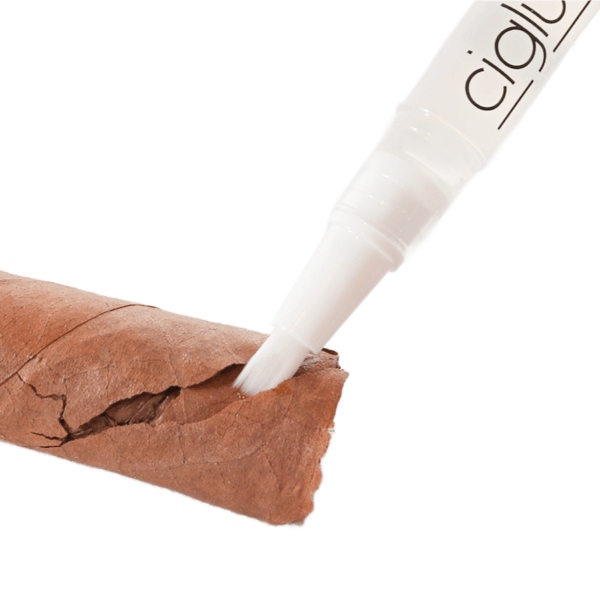
Get Your Ciglue Today!
Don’t let traditional cigar glue containers hold you back from enjoying your cigars to the fullest. Upgrade to Ciglue and experience the convenience and precision you deserve.
Shipping from Europe
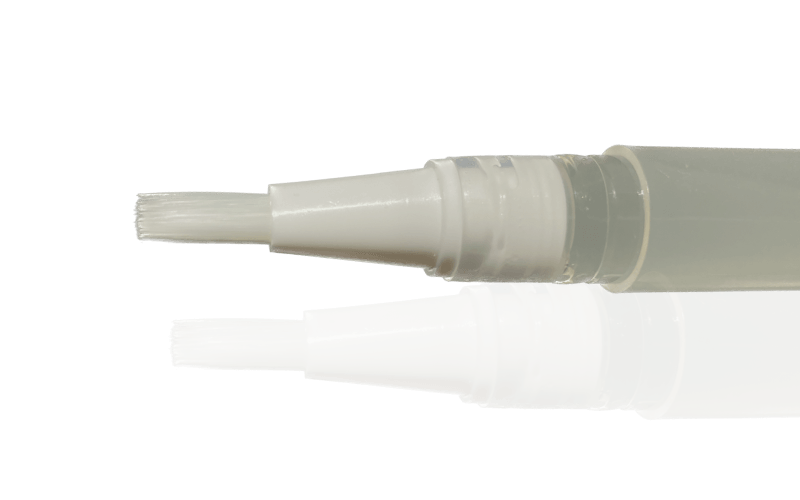
I had a chance to demo Ciglue, it worked great and much more efficient then others similar products on the market. I keep it in my travel humidor if the need arises.
Every Cigar Smoker Needs One of These!
The way it has been implemented is absolutely brilliant and for that reason I recommend it to virtually everyone.
Ciglue WILL fix your cigars!
When you have a simple product that works, I'm here for it... I think this is brilliant. I think this is a great idea. I think this is helpful.



